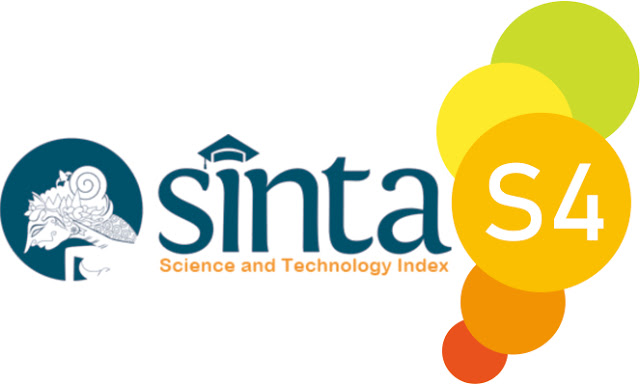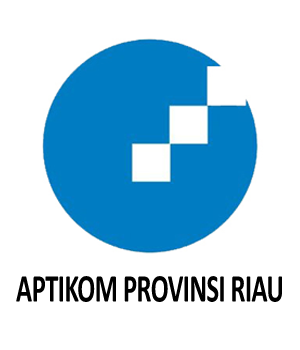Virtual Tour Three Dimensions (3D) With Polygonal Modeling At Sang Nila Utama Museum
Abstract
Sang Nila Utama Museum is an institution that functions as a place for the storage, care, safeguarding and use of objects of human culture and natural products to support efforts to protect and preserve cultural wealth. Based on the results of the surveys and interviews conducted, there are currently problems, namely 1) There is no system to present information about the collection of objects in the museum visually in 3D. 2) Due to the outbreak of Covid 19 virus, the museum management had to close the museum so far, so the public is not able to visit the museum to get information about the collection of historical relics in the Sang Nila Utama Museum. Based on the problems described above, an Android-based application for a virtual tour of exhibitions of historical objects was developed. The virtual tour is a result of the development of multimedia information technology and 3D technology that can present a 3D atmosphere. In developing this system, the Multimedia Development Life Cycle (MDLC) method was applied, which consists of several phases, namely: concept, design, material procurement, compilation, testing and distribution. This application will later run on the Android platform and use a mobile stick controller as a medium for navigation, allowing users to walk through the museum space to see a collection of historical relics in three-dimensional (3D) visual form. It is expected that this research will be one of the solutions to overcome the problems encountered in trying to improve services to the community.
Downloads
References
Banjarnahor, D., Ginting, M. F.,Widyaningrum, I., Hidayati, H., Gozali,A. A., “ MuseumBerbasis VirtualReality UntukMempromosikan Kebudayaan SumateraUtara.” E-Proceeding of AppliedScience, 2(2), 733–740, 2016.
T.Sy Eiva F, M.Iqbal, “Design for Android-Based Virtual Tour Application Using Polygonal Modeling and Extrude Face,” JAIA.,vol.1, no.1, pp. 19-27, 2020.
Rivandi M, Dyah Mutiarin, Janianton D, “Virtual Tourism Alternatif Wisata Saat Pandemi,” JITHOR., vol.4, no.1, pp.53-59, 2021.
Yoyon Efendi, Agung M, “Aplikasi Museum Sang Nila Utama Berbasis Mobile Dengan Teknologi 3d Augmented Reality,” JOISIE., vol.3, no.1, pp. 16-24, 2019.
Efendi, Yoyon, dan Junaidi, “Aplikasi 3D Virtuual Reality Berbasis Mobile Sebagai Media Promosi Budaya Melayu Riau Pada Museum Sang Nila Utama Pekanbaru.” Seminar Nasional SISFOTEK, pp.187–193,2018.
Mardainis, M.Arifin, Rahmaddeni, Yoyon Efendi, “Virtual Tour Interaktif 360 Derajat Menggunakan Teknik Image Stitching Sebagai Media Informasi Kampus STMIK Amik Riau” Digital Zone J.Teknologi dan Informasi., vol. 11, no. 2, pp. 206-218, 2020
Helda Yenni, Elvi Andriani, T.Sy Eiva Fatdha., “Model Perumahan Dengan Metode PolygonalModelingDan Teknik ExtrudeFace Berbasis VirtualReality,” J.Teknik Infomatika dan Sistem Informasi., vol. 9, no.2, 2022.
F.Dwi B, Rusydi U, Sunardi., “Visualisasi Museum Muhammadiyah Menggunakan Teknologi Augmented
Reality.” JUST IT., vol.11, no.1, 2020.
Baharuddin, Masnur, dan Rismayani.,“Aplikasi Virtual Tour Fakultas Teknik Berbasis Android.” Jurnal Sintaks Logika 1(2).2021.
Dianta, Ashafidz Fauzan, Zakha Maisat Eka Darmawan, Zulhaydar Fairozal Akbar, dan Kholid Fathoni., “Pengembangan Aplikasi Virtual Tour Sebagai Media Pengenalan Lingkungan Kampus PENS Berbasis Website.” Jurnal Teknologi Terpadu 7(1), pp. 23–30, 2021.
Falani, Achmad Zakki, Hendy Agha Satya Ramadan, dan Eman Setiawan.,“Implementasi Sistem Virtual Tour Berbasis E-Panorama Untuk Pengenalan Kampus Universitas Narotama Surabaya.” Jurnal Insand Comtech 1(1), pp. 9–16,2016.
Fauzi, Muhammad. 2019. “Penggunaan Tekhnik Blueprint Pada Pemodelan Objek 3D.” Jurnal Teknik Informatika Kaputama, vol. 3, no.1, pp. 35–41, 2019.
Hadinata, Novri, and Edi Supratman.,“Sistem Informasi Museum Negeri Provinsi Sumatera Selatan.” Jurnal SISFOKOM, vol. 06, no.02, pp. 99–104, 2017.
Hendini, Ade. 2016. “Pemodelan UML Sistem Informasi Monitoring Penjualan Dan Stok Barang (Studi Kasus : Distro Zhezha Pontianak).” Jurnal Khatulistiwa Infomatika IV(2): 107–16.
R. C. Tijono, R. R. Isnanto, and K. T. Martono, “Penerapan Teknologi Augmented Reality Sebagai Sarana Promosi"Sarana Sejahtera Wilson's Office Chairs" Berbasis Android,” vol. 3, no. 4, pp. 493–502, 2015.
P. Teknik, I. Ft, and U. Negeri, “Pengembangan Aplikasi Augmented Reality Pengenalan Wisata Kota Manado Berbasis Mobile,” Front. J. Sains Dan Teknol., vol. 1, no. 2, 2018, doi: 10.36412/frontiers/001035e1/agustus201801.09.
Hafizh, Muhammad Patra, Torkis Nasution, dan Dwi Haryono., “Citra 2D Sebagai Representasi Benda-
Benda Bersejarah Pada Museum Sang Nila Utama.” Jounal Of Infomation System And Informatic Engineering, vol.2, no.2, pp.16-27, 2018.
N, Xi., J, Hamari.,Shopping In Virtual Reality: A Literature Review and Future Agenda, Journal of Business Research, Vol 134, Hal 37-58, 2021
T. Danny., C.K, Marvin.,C.O, Marleen., Changing Consumer Behaviour in Virtual Reality: A Systematic Literature Review, Computers ini Human Behavior Reports, Vol 3, Hal 1-6,2021
Linowes, J., Unity Virtual Reality Projects: Explore The World of Virtual Reality by Building Immersive and Fun VR Projects Using Unity 3D, PACKT Publishing,2015.
Nugraha, B.S., Firda, I.N., 2021, Perancangan Ruang Lingkungan 3D Untuk Aplikasi Virtual Reality Simulator Pengoperasian Alat Berat, Jurnal Teknologi Informasi, Vol 9, Hal 1-8
Wijaksono, Sigit, Bonny A Suryawinata,and Michael Isnaeni Djimantoro. “Pengkajian Aplikasi 3D Untuk Permodelan Bangunan Bersejarah.” (9): 751–56.
Hendini, Ade. 2016. “Pemodelan UML SistemInformasi Monitoring Penjualan Dan StokBarang (Studi Kasus: Distro ZhezhaPontianak).” Jurnal Khatulistiwa InfomatikaIV(2): 107–16.
Hidayat, Rahmad. 2015. “Pemodelan Karakter3-Dimensi Menggunakan Geometri ShapePolygon Dengan Tehnik Extrude Face.” JurnalArsitekno 6(6): 1–6.
Hafizh, M. P., Nasution, T., & Haryono, D.(2018). Citra 2d Sebagairepresentasi Benda-BendaBersejarah Pada. JOISIE JournalOf Information System And Informaticsengineering, 2(2), 16–27.
Copyright (c) 2022 T Sy Eiva Fatdha, Naufal Dzaky Raza, Yoyon Efendi

This work is licensed under a Creative Commons Attribution-ShareAlike 4.0 International License.
This is an open-access article distributed under the terms of the Creative Commons Attribution-ShareAlike 4.0 International License which permits unrestricted use, distribution, and reproduction in any medium. Users are allowed to read, download, copy, distribute, search, or link to full-text articles in this journal without asking by giving appropriate credit, provide a link to the license, and indicate if changes were made. All of the remix, transform, or build upon the material must distribute the contributions under the same license as the original.















